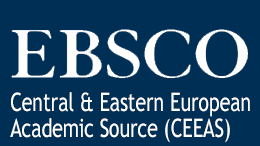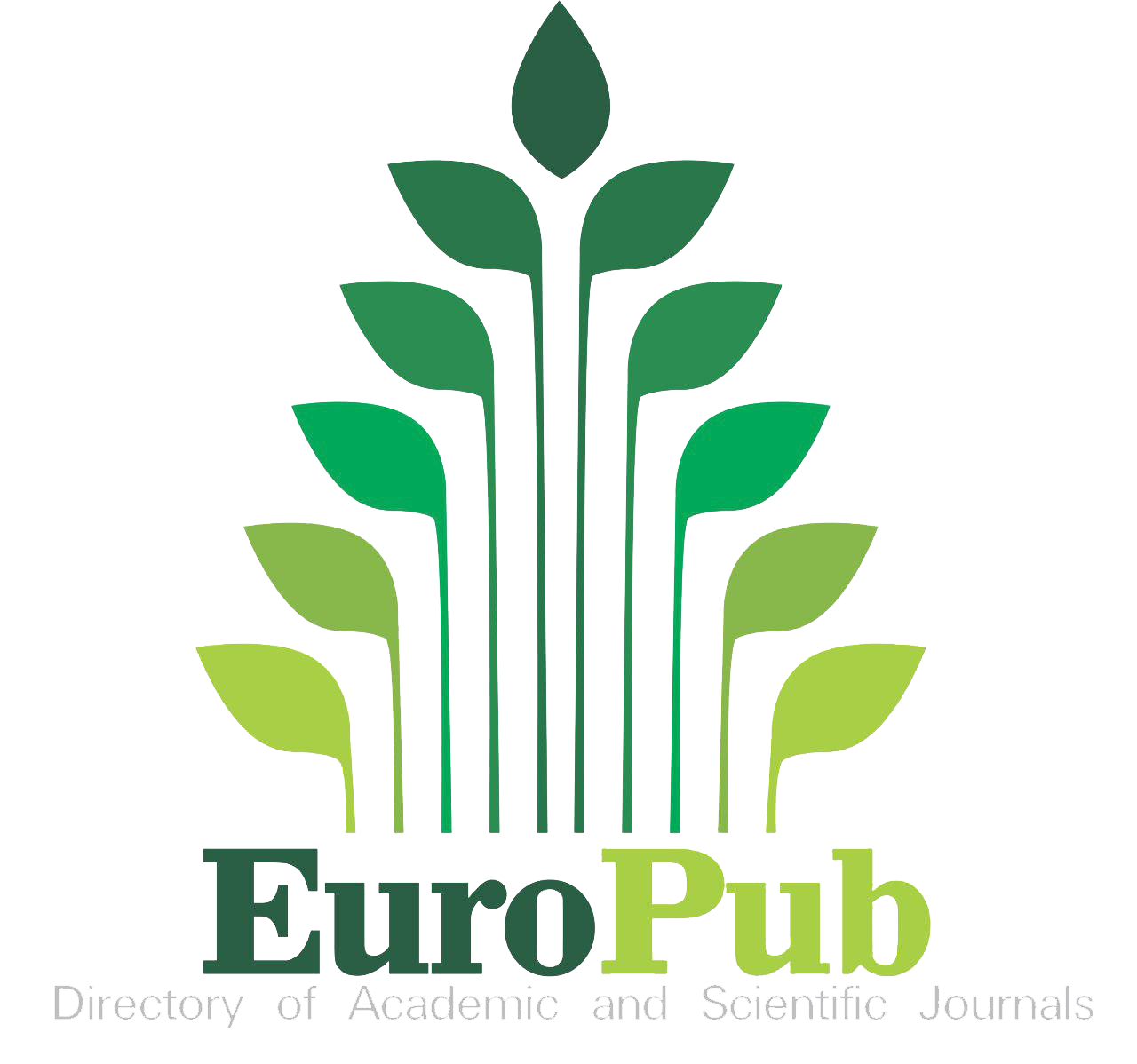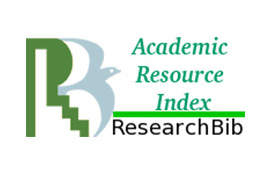Chemically and pharmacologically induced liver toxicity models in experimental animals and observed changes
Chemically and pharmacologically induced liver toxicity models
DOI:
https://doi.org/10.5281/zenodo.14568604Keywords:
Liver toxicity, ALT, AST, MDA, GSHAbstract
Toxicity models conducted using laboratory animals are widely preferred in biomedical research to understand the effects of toxic substances on biological systems, to make safety assessments, and to test therapeutic approaches. Another reason is the physiological and anatomical similarities of mice, rats, and rabbits to humans. Although there are many experimental liver toxicity models, toxicity models created with drugs and chemicals are preferred over surgical models. These models aim to simulate many conditions such as acute or chronic toxicities, drug toxicities, hepatitis, steatosis, and cirrhosis. Toxicology models have a special importance because the liver is considered one of the most vulnerable organs to toxic substances due to its metabolic functions. In this context, experimental toxicity models created with many drugs and chemicals such as acetaminophen, cadmium, ethanol, carbon tetrachloride, and diclofenac have been evaluated. In experimental studies, although different among models, biochemically elevated alanine aminotransferase (ALT), aspartate aminotransferase (AST), and malondialdehyde (MDA) levels indicate liver damage, while decreased glutathione (GSH) levels reflect weakened antioxidant defenses. Histopathologically, although different among models, necrosis, fibrosis, fat accumulation and inflammation have been observed, depending on the type of toxin. Experimental liver toxicity models are indispensable for understanding liver pathophysiology, identifying potential risks and advancing hepatoprotective therapies. Their findings will improve biomedical research and clinical practice in addressing toxin-induced liver damage.
References
Bailey J, Thew M, Balls M. An analysis of the use of animal models in predicting human toxicology and drug safety. Altern Lab Anim. 2014;42(3):181-199. doi:10.1177/026119291404200306
Gad SC. Animal Models in Toxicology. CRC Press; 2006. doi:10.1201/9781420014204
Gómez-Lechón MJ, Tolosa L, Conde I, Donato MT. Competency of different cell models to predict human hepatotoxic drugs. Expert Opin Drug Metab Toxicol. 2014;10(11):1553-1568. doi:10.1517/17425255.2014.967680
Rusyn I, Peters JM, Cunningham ML, et al. Key characteristics of human hepatotoxicants as a basis for identification and characterization of the causes of liver toxicity. Hepatology. 2021;74(3):1565-1583. doi: 10.1002/hep.31999
Olson H, Betton G, Robinson D, et al. Concordance of the toxicity of pharmaceuticals in humans and in animals. Regul Toxicol Pharmacol. 2000;32(1):56-67. doi:10.1006/rtph.2000.1399
Hartung T. Thoughts on limitations of animal models. Parkinsonism Relat Disord. 2008;14:81-83. doi:10.1016/j.parkreldis.2008.04.003
Festing MF, Wilkinson J. The ethics of animal research. Talking point on the use of animals in scientific research. EMBO Rep. 2007;8(6):526-530. doi:10.1038/sj.embor.7400993
McGill MR, Williams CD, Xie Y, Ramachandran A, Jaeschke H. Acetaminophen-induced liver injury in rats and mice: Comparison of protein adducts, mitochondrial dysfunction, and oxidative stress in the mechanism of toxicity. Toxicol Appl Pharmacol. 2012;264(3):387-394. doi:10.1016/j.taap.2012.08.015
Vicaș S, Maier C, Lazar V, et al. Nano selenium-enriched probiotics as functional food products against cadmium liver toxicity. Materials. 2021;14(19):5745. doi.org/10.3390/ma14092257
Valavanidis A, Vlachogianni T, Fiotakis C. 8-Hydroxy-2′-deoxyguanosine (8-OHdG): A critical biomarker of oxidative stress and carcinogenesis. J Environ Sci Health C. 2009;27(2):120-139. doi:10.1080/10590500902885684
Rikans LE, Yamano T. Mechanisms of cadmium-mediated acute hepatotoxicity. J Biochem Mol Toxicol. 2000;14(2):110-117. doi:10.1002/(sici)1099-0461(2000)14:2<110::aid-jbt7>3.0.co;2-j
Gad SC, Chengelis CP. Animal Models in Toxicology. 1st ed. CRC Press; 1998.
Junqueira LC, Carneiro J. Basic Histology: Text & Atlas. 11th ed. McGraw-Hill Education; 2005.
Wake K. Hepatic stellate cells: Three-dimensional structure, localization, heterogeneity and development. Proc Jpn Acad Ser B Phys Biol Sci. 2006;82(4):155-164. doi:10.2183/pjab.82.155
Guyton AC, Hall JE. Textbook of Medical Physiology. 11th ed. Elsevier; 2006.
Guengerich FP. Cytochrome P450 and chemical toxicology. Chem Res Toxicol. 2008;21(1):70-83. doi:10.1021/tx700079z
Kaplan LA, Pesce AJ. Clinical Chemistry: Theory, Analysis, Correlation. 3rd ed. Mosby; 1996.
Sherlock S, Dooley J. Diseases of the Liver and Biliary System. 12th ed. Blackwell Publishing; 2011.
Weber LW, Boll M, Stampfl A. Hepatotoxicity and mechanism of action of haloalkanes: Carbon tetrachloride as a toxicological model. Crit Rev Toxicol. 2003;33(2):105-136. doi:10.1080/713611034
Manibusan MK, Odin M, Eastmond DA. Postulated carbon tetrachloride mode of action: a review. J Environ Sci Health C Environ Carcinog Ecotoxicol Rev. 2007;25(3):185-209. doi:10.1080/10590500701569398
Recknagel RO, Glende EA, Dolak JA, Waller RL. Mechanisms of carbon tetrachloride toxicity. Pharmacol Ther. 1989;43(1):139-154. doi:10.1016/0163-7258(89)90050-8
Atasever A, Sayar E, Ekebaş G, Şentürk M, Eren M. Ratlarda karbon tetraklorür (CCl4) ile oluşturulan kronik karaciğer hasarı üzerine susam yağının etkisi ve kaspaz aktivitesi ile hepatik apoptozisin belirlenmesi. Cumhuriyet Üniversitesi Sağlık Bilimleri Enstitüsü Dergisi, 2020;5(3):144-160.
Karaman M, Özen H, Dağ S, Atakişi O, Çiğsar G, Kaya O. Ameliorative effect of omega-3 in carbon tetrachloride toxicity. Kafkas Univ Vet Fak Derg. 2017;23(1):77-85. doi: 10.9775/kvfd.2016.15862
Friedman SL. Hepatic fibrosis—Overview. J Hepatol. 2008;49(5):1015-1022. doi.org/10.1016/j.tox.2008.06.013
Woolbright BL, Jaeschke H. Mechanisms of acetaminophen-induced liver injury. In: Ding WX, Yin XM, eds. Cellular Injury in Liver Diseases. Cell Death in Biology and Diseases. Cham, Switzerland: Springer; 2017:45-66. doi:10.1007/978-3-319-53774-0_3
Hinson JA, Roberts DW, James LP. Mechanisms of acetaminophen-induced liver necrosis. Handb Exp Pharmacol. 2010;(196):369-405. doi:10.1007/978-3-642-00663-0_12
Jaeschke H, McGill MR, Ramachandran A. Oxidant stress, mitochondria, and cell death mechanisms in drug-induced liver injury: lessons learned from acetaminophen hepatotoxicity. Drug Metab Rev. 2012;44(1):88-106. doi:10.3109/03602532.2011.602688
Yapar K, Kart A, Karapehlivan M, et al. Hepatoprotective effect of L-carnitine against acute acetaminophen toxicity in mice. Exp Toxicol Pathol. 2007;59(2):121-128. doi:10.1016/j.etp.2007.06.005
Ramachandran A, Jaeschke H. Acetaminophen hepatotoxicity. Semin Liver Dis. 2019;39(2):221-234. doi:10.1055/s-0039-1685160
Antoine D, Dear J, Starkey-Lewis P, et al. Mechanistic biomarkers provide early and sensitive detection of paracetamol-induced acute liver injury at first presentation to hospital. J Hepatol. 2013;58:365-372. doi:10.1016/j.jhep.2012.10.018
Tsukamoto H, Towner SJ, Ciofalo LM, French SW. Ethanol-induced liver fibrosis in rats fed high fat diet. Hepatology. 1986;6(5):814-822. doi:10.1002/hep.1840060503.
Albano E. Alcohol, oxidative stress, and free radical damage. Proc Nutr Soc. 2006;65(3):278-290. doi:10.1079/pns2006496.
Arteel GE. Oxidants and antioxidants in alcohol-induced liver disease. Gastroenterology. 2003;124(3):778-90. doi: 10.1053/gast.2003.50087
Cederbaum AI. Alcohol metabolism. Clin Liver Dis. 2012;16(4):667-685. doi:10.1016/j.cld.2012.08.002
Adali Y, Eroǧlu HA, Makav M, Guvendi GF. Efficacy of ozone and selenium therapy for alcoholic liver injury: An experimental model. In Vivo. 2019;33(3):763-769. doi:10.21873/invivo.11537
Shen S, Marchick MR, Davis MR, Doss GA, Pohl LR. Metabolic activation of diclofenac by human cytochrome P450 3A4: Role of 5-hydroxydiclofenac. Chem Res Toxicol. 1999;12(2):214-222. doi:10.1021/tx9802365
Masubuchi Y, Nakayama S, Horie T. Role of mitochondrial permeability transition in diclofenac-induced hepatocyte injury in rats. Hepatology. 2002;35(3):544-551. doi:10.1053/jhep.2002.31871
Ozcan K, Sozmen M, Erginsoy S, Beytut E, Dogan A. Metallothionein expression in rabbits following cadmium exposure. Indian Vet J. 2004;81(5):499-505.
Järup L, Berglund M, Elinder CG, Nordberg G, Vahter M. Health effects of cadmium exposure-a review of the literature and a risk estimate. Scand J Work Environ Health. 1998;24 Suppl 1:1-51.
Liu J, Qu W, Kadiiska MB. Role of oxidative stress in cadmium toxicity and carcinogenesis. Toxicol Appl Pharmacol. 2009;238(3):209-214. doi:10.1016/j.taap.2009.01.029
Nishijo M, Nakagawa H, Morikawa Y, et al. Mortality in a cadmium polluted area in Japan. Biometals. 2004;17(5):535-538. doi:10.1023/b:biom.0000045734.44764.ab
Nawrot TS, Staessen JA, Roels HA, et al. Cadmium exposure in the population: from health risks to strategies of prevention. Biometals. 2010;23(5):769-782. doi:10.1007/s10534-010-9343-z
Henderson CJ, Wolf CR, Kitteringham N, Powell H, Otto D, Park BK. Increased resistance to acetaminophen hepatotoxicity in mice lacking glutathione S-transferase Pi. Proc Natl Acad Sci U S A. 2000;97(23):12741-12745. doi:10.1073/pnas.220176997
Miller NE, Thomas D, Billings RE. Bromobenzene metabolism in vivo and in vitro. The mechanism of 4-bromocatechol formation. Drug Metab Dispos. 1990;18(3):304-308.
Pessayre D, Cobert B, Descatoire V, et al. Hepatotoxicity of trichloroethylene-carbon tetrachloride mixtures in rats. A possible consequence of the potentiation by trichloroethylene of carbon tetrachloride-induced lipid peroxidation and liver lesions. Gastroenterology. 1982;83(4):761-772.
Schumann AM, Quast JF, Watanabe PG. The pharmacokinetics and macromolecular interactions of perchloroethylene in mice and rats as related to oncogenicity. Toxicol Appl Pharmacol. 1980;55(2):207-219. doi:10.1016/0041-008x(80)90082-4
Buben JA, O'Flaherty EJ. Delineation of the role of metabolism in the hepatotoxicity of trichloroethylene and perchloroethylene: A dose-effect study. Toxicol Appl Pharmacol. 1985;78(1):105-122. doi:10.1016/0041-008X(85)90176-2
Lash LH, Fisher JW, Lipscomb JC, Parker JC. Metabolism of trichloroethylene. Environ Health Perspect. 2000;108 Suppl 2:177-200. doi:10.1289/ehp.00108s2177
Ezhilarasan D. Hepatotoxic potentials of methotrexate: Understanding the possible toxicological molecular mechanisms. Toxicology. 2021;458:152840. doi:10.1016/j.tox.2021.152840
Akman AU, Erisgin Z, Turedi S, Tekelioglu Y. Methotrexate-induced hepatotoxicity in rats and the therapeutic properties of vitamin E: A histopathologic and flowcytometric research. Clin Exp Hepatol. 2023;9(4):359-367. doi:10.5114/ceh.2023.132251
Cronstein BN, Aune TM. Methotrexate and its mechanisms of action in inflammatory arthritis. Nat Rev Rheumatol. 2020;16:145-154. doi:10.1038/s41584-020-0373-9
Tostmann A, Boeree MJ, Aarnoutse RE, de Lange WC, van der Ven AJ, Dekhuijzen R. Antituberculosis drug-induced hepatotoxicity: Aoncise up-to-date review. J Gastroenterol Hepatol. 2008;23(2):192-202. doi:10.1111/j.1440-1746.2007.05207.x
Metushi I, Uetrecht J, Phillips E. Mechanism of isoniazid-induced hepatotoxicity: then and now. Br J Clin Pharmacol. 2016;81(6):1030-1036. doi:10.1111/bcp.12885
Helland T, Henne N, Bifulco E, et al. Serum concentrations of active tamoxifen metabolites predict long-term survival in adjuvantly treated breast cancer patients. Breast Cancer Res. 2017;19:125. doi:10.1186/s13058-017-0902-5
Jena SK, Suresh S, Sangamwar AT. Modulation of tamoxifen-induced hepatotoxicity by tamoxifen–phospholipid complex. J Pharm Pharmacol. 2015;67(9):1198-1206. doi:10.1111/jphp.12422
Famurewa AC, Ekeleme-Egedigwe CA, Obasi NL. Zinc abrogates anticancer drug tamoxifen-induced hepatotoxicity by suppressing redox imbalance, NO/iNOS/NF-κB signaling, and caspase-3-dependent apoptosis in female rats. Toxicol Mech Methods. 2020;30(5):331-340. doi:10.1080/15376516.2019.1669243
Ribeiro MPC, Santos AE, Custódio JBA. Mitochondria: the gateway for tamoxifen-induced liver injury. Toxicology. 2014;323:97-108. doi:10.1016/j.tox.2014.07.008
Ahmed NS, Samec M, Liskova A, Kubatka P, Saso L. Tamoxifen and oxidative stress: An overlooked connection. Discov Oncol. 2021;12(1):102-118. doi:10.1007/s12672-021-00411-y
Gao FF, Lv JW, Wang Y, Fan R, Li Q. Tamoxifen induces hepatotoxicity and changes to hepatocyte morphology at the early stage of endocrinotherapy in mice. Biomed Rep. 2016;4(1):102-108. doi:10.3892/br.2015.536
Karam HM, Galal SM, Lotfy DM. Nrf2 and NF-κB interplay in tamoxifen-induced hepatic toxicity: a promising therapeutic approach of sildenafil and low-dose γ radiation. Environ Toxicol. 2023;38(2):342-352. doi:10.1002/tox.23742
Lipshultz SE, Cochran TR, Franco VI, Miller TL. Treatment-related cardiotoxicity in survivors of childhood cancer. Nat Rev Clin Oncol. 2013;10(12):697-710. doi:10.1038/nrclinonc.2013.195
Downloads
Published
How to Cite
Issue
Section
License
Copyright (c) 2024 Rats

This work is licensed under a Creative Commons Attribution 4.0 International License.


















